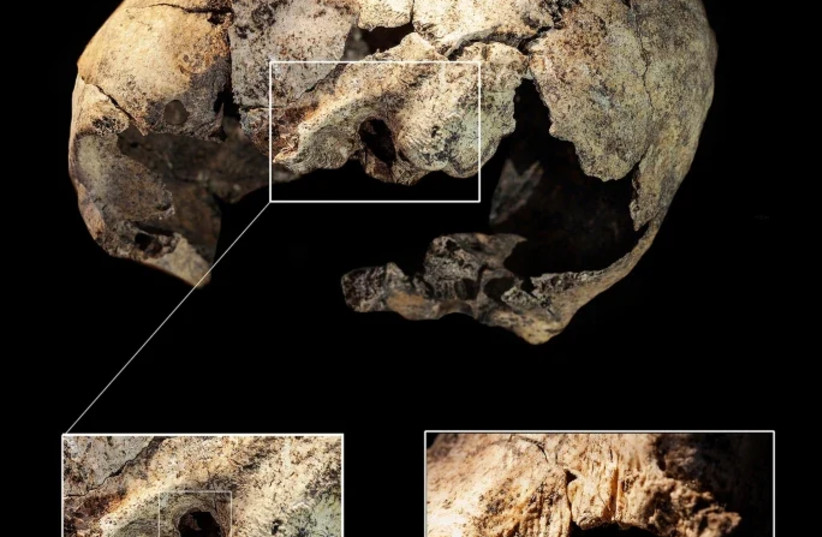Humans may have begun performing ear surgery more than 5,000 years ago, say Spanish researchers.
Seven cut marks found near the left ear canal of a 5,300-year-old skull are an indication that a person with some “anatomical knowledge” undertook a primitive surgical procedure to relieve possible ear pain, they say.
The skull, which according to analysis belonged to an elderly woman, was found among other human remains of some 100 people in 2018 in a large, single-chamber, multi-phase tomb known as the Dolmen of El Pendón in Reinoso, Burgos, Spain, dating from the late Neolithic period.
A dolmen is a type of tomb usually consisting of two or more monumental stones known as megaliths supporting a large flat horizontal stone, creating sort of a table gravestone.
“What we can say is that certain individuals would have attained a degree of anatomical knowledge and experience as ‘healers’ or budding physicians, if you like, to succeed in this kind of primitive healing,” said Manuel Rojo-Guerra of the Department of Prehistory and Archaeology at the University of Valladolid, who together with colleagues Sonia Díaz-Navarro and Cristina Tejedor-Rodríguez have been excavating the site since 2016.

Researchers say that evidence of two perforations on both airy mastoid bones, which protect the delicate structure of the ear, indicates that a surgical procedure was carried out on the woman possibly to relieve inner ear pain she may have suffered.
It is unknown if the procedures were carried out at the same time, or during separate occasions, they said, but specific bone growth around the area indicates that the woman survived both procedures.
“Given the chronology of this dolmen, this find would be the earliest surgical ear intervention in the history of mankind,” the researchers said in their report which was published on February 15 in Scientific Reports.
They noted that the bony wall separating the ear canal from the mastoid bone was preserved on both cavities.
According to the researchers the prehistoric surgeon would have had to first identify the location of the problem—and probably would have been able to see the infection with his (or her) own eye—and then successfully performed the procedure which would have consisted of “progressive circular and abrasive drilling causing unbearable pain under normal conditions.”
The woman would have had to have been strongly restrained by other community members or given mood-altering substances to relieve pain or even lose consciousness, they said.
Rojo-Guerra said the additional discovery in the tomb of a flint blade with traces of having cut bone and having been reheated several times at between 300-350 degrees leads them to propose that it was used as a cauterization surgical instrument for the procedure.
Doctors at the University Hospital of the University of Valladolid confirmed that the procedure would have been very similar to surgical interventions that are still performed today to eliminate middle ear infections, he said.
